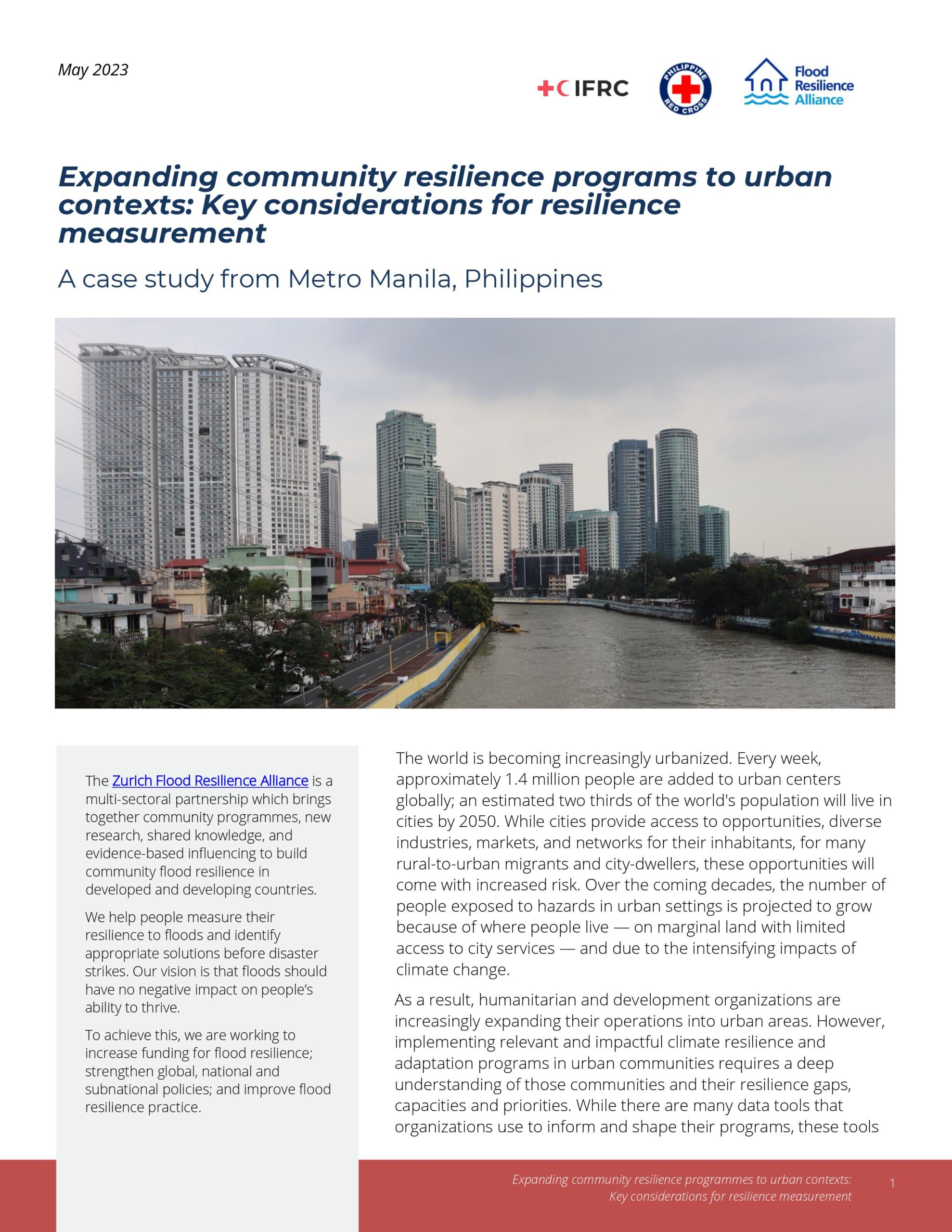Expanding community resilience programs to urban contexts: Key considerations for resilience measurement

Expanding community resilience programs to urban contexts: Key considerations for resilience measurement
A case study from Metro Manila, Philippines
The world is becoming increasingly urbanized. Every week, approximately 1.4 million people are added to urban centers globally; an estimated two thirds of the world’s population will live in cities by 2050. While cities provide access to opportunities, diverse industries, markets, and networks for their inhabitants, for many rural-to-urban migrants and city-dwellers, these opportunities will come with increased risk.Over the coming decades, the number of people exposed to hazards in urban settings is projected to grow because of where people live — on marginal land with limited access to city services — and due to the intensifying impacts of climate change. Implementing relevant and impactful climate resilience and adaptation programs in urban communities requires a deep understanding of those communities and their resilience gaps, capacities and priorities.
Since 2019, the Philippine Red Cross (PRC) and the International Federation of Red Cross and Red Crescent Societies (IFRC) have been implementing a resilience program as a part of the Zurich Flood Resilience Alliance (the Alliance), focused on shifting from the traditional emphasis on post-event response and recovery to pre-event resilience. This program was designed based on the data the PRC collected via the Alliance’s Flood Resilience Measurement for Communities (FRMC) framework and tool on community resilience gaps and opportunities. This case study shows how the PRC tailored the application of this approach to suit an urban context.
The considerations the PRC and IFRC teams took into account when expanding their work to Metro Manila are specific to the resilience measurement framework and tool (i.e., the FRMC) they used. However, their approach to tailoring the framework and tool is applicable more broadly to development and humanitarian organizations expanding their work to urban centers.
